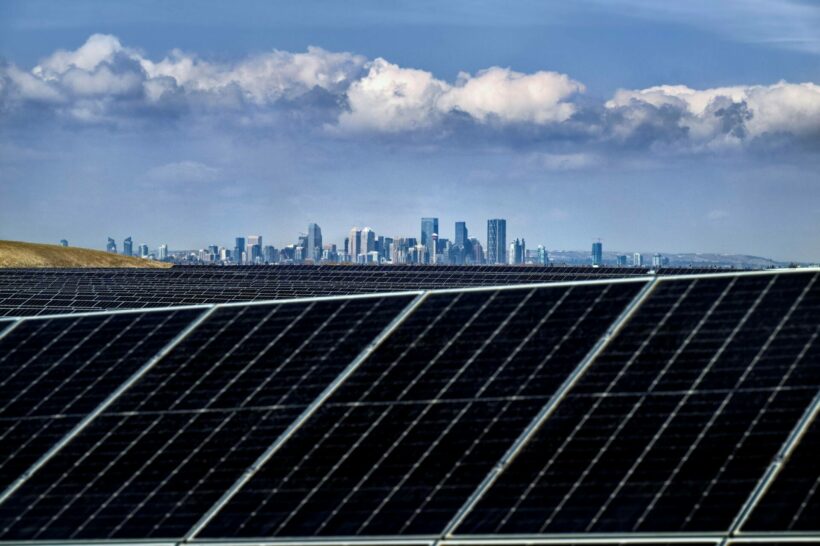A new, utility-scale solar power plant proposed for a 1,600-acre site in Medicine Hat, Alberta, Canada is expected to be one of the largest urban solar power projects in all of North America.
The 325 megawatt (MW) Saamis Solar Park proposal was recently sold to Medicine Hat, as Mother Jones reported. The project, developed by DP Energy, is slated for a brownfield site with otherwise limited development potential, as it contains a capped phosphogypsum stack.
As explained by the Center for Biological Diversity, phosphogypsum is a radioactive substance leftover from the processing of phosphate ore into phosphoric acid, which is a common fertilizer ingredient. Leftover phosphogypsum is often disposed of by stacking the waste, then covering it with soil to minimize radon exposure, as phosphogypsum can form radon as it decays.
“Not only is it a productive use of a large area of contaminated land with limited development potential, it now also has the potential to contribute to the city’s energy transition to clean, renewable power,” Damian Bettles, DP Energy’s North America head of development, told Canada’s National Observer.
In addition to redeveloping a brownfield site, the Saamis project takes advantage of the sunniest city in Canada. According to a city marketing campaign Move to Medicine Hat, the city has an average of 330 sunny days per year. By comparison, that’s more than each of the top 10 sunniest cities in the U.S., as reported by MSN.
The project was first approved for development rights for the proposed site in 2017 and received the development permit in 2021, Energy Global reported. Alberta Utilities Commission (AUC) approved construction and operation in 2024 and recently approved the sale from DP Energy to the city of Medicine Hat.
The project is now ready to begin construction, and Medicine Hat is seeking approval to launch the project in phases, starting with adding 75 MW.
DP Energy reported that the project will include more than 600,000 solar panels, fixed and tilt panel racks, inverter and transformer stations, an electrical collection system, access roads, and a substation to connect the plant to the Alberta Interconnected Electric System (AIES).
Once completed, the 325 MW project is expected to meet peak energy demand for much of the city, including industrial facilities, commercial buildings and the homes of 65,000 residents. In total, the project could offset about 350,000 tons of carbon emissions per year, Energy Global reported.
As Medicine Hat News reported, the project will be among the biggest urban solar sites in North America, following behind the Copper Mountain Solar Facility, located in Boulder City, Nevada, which has an 802 MW capacity. In Alberta, the project will trail behind the Travers Solar Project, with 465 MW capacity, which is not an urban solar plant but is located in Vulcan County and has the highest solar energy production capacity in Canada.
Moving forward, the city may consider adding battery storage, additional solar and wind projects to further the clean energy transition.
“Overall we are looking for proven technologies that can provide affordable power to our rate base and our own internal carbon compliance,” Travis Tuchscherer, director of energy marketing and business analysis, told Canada’s National Observer.






